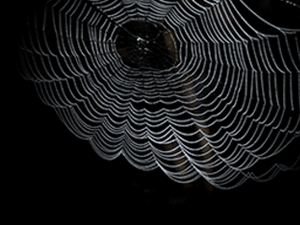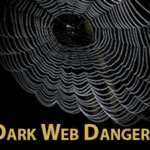The internet puts a galaxy of information at our fingertips and is an indispensable part of our professional and personal lives. But while all that information and utility has made our lives easier, it has also attracted the attention of criminal minds. The most mysterious section of the internet is the dark web. While the dark web is often in the news for all the wrong reasons, there is also a lot of inaccurate information about the dark web floating around on the internet. Read this blog to learn more about today’s dark web.
This dark web is a small section of the internet serves many purposes. Some are legitimate, like providing an outlet for dissident journalists from countries with oppressive regimes. But the dark web is also a place where cybercriminals congregate to plan and execute all kinds of nefarious activities as well as an illicit marketplace. The widespread use of cryptocurrencies and the evolution of free and open-source software for enabling anonymous communication, such as The Onion Router (Tor), have facilitated the rapid growth of the dark web and its cybercrime economy.
What Is The Dark Web?
The dark web is a kind of secret underground network comprised of a series of websites hidden from the general public. This is because dark web websites are not indexed by traditional search engines such as Google and Bing and only accessible by using a special browser. The dark web has become a hotbed of all kinds of criminal activities, such as drugs, weapons, hitman services, hacking, stolen credit cards, malware, stolen business data and identity theft. Dark web traffic bounce signals off nodes or relay sites located in multiple nations all over the globe, making it challenging for government agencies across countries to monitor illicit activities on the dark web.
When Was The Dark Web Created?
In the late 1990s, the U.S. Department of Defense started an endeavor to develop an anonymized and encrypted network that would protect the sensitive communications of U.S. spies. While the original project never saw the light of day, some researchers saw a different value proposition of the dark web — a nonprofit focused on anonymity for human rights and privacy activists.
Who Created The Dark Web?
The cornerstone of the modern-day dark web that we know today was laid in March 2000 when an Irish student Ian Clarke developed and released Freenet, which offers anonymous communication online via a decentralized network of Freenet’s users. However, the U.S. government’s Tor Project fueled the dark web’s popularity by making TOR software open source in 2004.
After the TOR browser gained popularity, several computer enthusiasts, privacy advocates, journalists and dissidents under repressive governments started using the dark web to communicate anonymously.
What Was The Dark Web Originally Used For?
The dark web was used to fight back against government censorship and aid political activists in spreading their messages. It helped protect users’ privacy in ways the surface web failed to do. But gradually, bad actors also got a whiff of the anonymity feature of the dark web, and things escalated from there until the dark web evolved into the hotbed of illegal activity it is today.
Dark Web Vs. Deep Web Vs. Surface Web?
The internet runs far deeper than one can imagine. Almost 120 zettabytes (1 ZB = 1 trillion gigabytes) of data is available on the internet today. All this data is stored in three layers of the internet: the surface web, the deep web, and the dark web. Before we understand the dark web, it is essential to understand other parts of the internet, namely the surface web and the deep web.
The surface web: The layer most of us use every day, is just the tip of the iceberg and comprises only 5% of the internet. This is the portion of the internet that is readily accessible by the public, crawlable by typical search engines, and contains websites used for everyday activities such as online shopping, blogging, or general information.
The deep web: This layer includes most (more than 90%) of the internet, where the content is hidden behind a paywall or requires sign-in credentials. Some examples of deep web content are medical records, fee-based content, membership websites and proprietary corporate web pages. It can also include the content that the owners have blocked web crawlers from indexing.
The dark web: A small subset of the deep web, the dark web requires a unique browser like Tor to gain access and browse the content. Although no one knows the size of the dark web, estimates put it at around 4-5% of the total internet.
How Do You Access The Dark Web?
While it’s easy to access the surface web, the dark web is not accessible through normal web browsers and search engines. Here’s how you can access the dark web.
To access the dark web, a user needs to install the Tor browser. Once a user installs a dark web browse like Tor on their device, it acts like a regular browser. Tor users can connect to the dark web through a private server called Bridge and a publicly listed server, Relay. While the Tor browser is the most widely used method of accessing the dark web, other communications platforms like Signal can also be used to access the dark web.
Unlike the surface web, the dark web uses complex systems that anonymize a user’s true IP address. Hence, browsing the dark web has a different feel than a normal browser.
What Does The Dark Web Look Like?
While the Tor browser works like a standard browser, web addresses on the dark web tend to be a mix of random numbers and letters, making it difficult for users to find the requisite information. These addresses also change often due to the transient nature of many dark web actors. The naming structure is also different, with dark web websites ending with .onion, instead of .com or .co. Besides, the search process is also very slow as the dark web routes all traffic through a series of proxy servers, which are operated by thousands of volunteers around the world. A dark web site looks like a basic standard website, just more stripped down. The functionality and design will be considerably less sophisticated than a surface web site, but altogether a dark web site isn’t really much different than a surface website.
Is The Dark Web Illegal?
Simply put, accessing and browsing the dark web is entirely legal. But keep in mind that the dark web is not regulated, and there is no guarantee that the sites you visit are safe or legitimate. As many illegal activities happen on the dark web, a user visiting dark web sites or marketplaces might be inadvertently supporting these unlawful activities and contributing to the harm caused by them.
As a lot of illegal activities happen on the dark web, it is often thought of as the sole purview of criminals, however, that is not the case. The dark web serves many useful purposes beyond cybercrime.
What Legal Things Can You Do On The Dark Web?
The dark web is not used for illegal activities only. Citizens in countries with authoritarian regimes use it to bypass internet restrictions put in place by their governments. Many whistleblowers also use the dark web to communicate with journalists under a veil of anonymity. Interestingly, the U.S Central Intelligence Agency (CIA) has an official presence on the dark web to allow people to contact the agency without the fear of getting tracked. Users can also access research papers for free that are submitted by the original authors. Downloads of books and movies that may have been banned in certain countries are available.
What Is On The Dark Web?
With the emergence of decentralized cryptocurrency, dark web commerce has flourished to a great extent. Today, dark web commerce websites have all the features of a typical e-commerce website, including ratings/reviews, shopping carts and forums. However, as both buyers and sellers are anonymous, the credibility of any information is dubious. Here are some things a person can buy on dark websites, according to the Dark Web Price Index 2021:
- Cloned credit card with PIN is priced at $25 to $35
- Credit card details with account balance up to $5,000 are available for $240
- Stolen online banking logins with at least $2,000 in the account for $120
- PayPal transfers from stolen accounts for $50 to $340
- Hacked Coinbase verified account costs about $610
- Hacked social media account is available from as low as $1 to $60
- Hacked eBay account at $1,000
Since much of the data found in the dark web poses serious risks to businesses, it is essential for organizations to keep an eye on the dark web forums for stolen data. By monitoring the dark web, organizations can take proactive actions before cybercriminals target their organizations.
What Is Dark Web Watch?
Dark Web Watch is a process of searching and monitoring information available on the dark web. As most organizations have ramped up their online presence, their vulnerability to cyberattacks has also increased. With dark web monitoring, organizations can find stolen or leaked information, such as compromised passwords, credentials and other sensitive data being shared and sold among criminals operating on the dark web.
Dark Web Watch is a front-line defense against the dangers of The Dark Web. To learn more, visit: Learn More About Dark Web Watch
Article courtesy Kaseya





